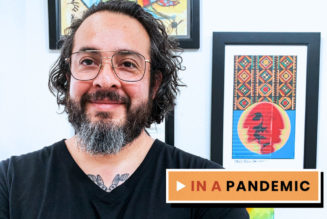Columnists
Let’s revitalise coffee, tea value chains
Thursday September 07 2023

Understanding the coffee and tea value chains is essential for informed decision-making regarding production, processing, distribution, and consumption. PHOTO | FOTOSEARCH
Next week, the Kenya Embassy in Belgium will host key players in the coffee and tea industry. The focus of this event will be on the value chain, which plays a pivotal role in transforming the sector.
The participants will represent major exporters and roasters from Kenya, who are essential in the cupping process for both commodities.
After the initial cupping exercise in Belgium, the event will move to The Hague in the Netherlands and Berlin in Germany.
It’s noteworthy that in 2021, Belgium became Kenya’s top export market for coffee, surpassing the United States for the first time in a decade.
Just like in any other business, understanding the customer is essential for success in the trade.
In today’s digitised market, the practice of ‘Cupping,’ used to evaluate and compare the flavour, quality, and potential of coffee or tea, has a rich history.
Several studies suggest it dates back to the Tang Dynasty (618-907 AD), initially referred to as tea tasting. Coffee cupping also emerged around 400 years ago, originating in China and passed down through generations by word of mouth.
Some sources credit ancient Egyptians with inventing this technique around 1500 B.C.
However, it wasn’t until 1984, with the publication of The Coffee Cupper’s Handbook by Ted R. Lingle, that standardised cupping procedures were introduced. Today, cupping is a crucial practice for sourcing coffees and developing roast profiles to ensure consistency and quality control.
Given that cupping is considered a highly specialised skill, it requires years of training and capacity building for many farmers.
It should not be limited to a select group of individuals. Its significance has grown because it provides valuable data to all stakeholders in the supply chain, particularly the farmers.
Understanding the coffee and tea value chains is essential for informed decision-making regarding production, processing, distribution, and consumption.
This knowledge profoundly impacts the quality, sustainability, and marketability of these cash crops.
Unfortunately, many farmers, who are the primary producers of these commodities, lack an understanding of the full spectrum of activities necessary to improve their earnings.
To gain recognition in the market, they must comprehend factors such as their target consumers, unique selling points, and the need to develop effective communication channels and create a memorable brand experience.
Furthermore, producers must be aware of new varieties that can fetch higher prices. Unfortunately, the methods currently used to reach most customers remain a mystery to many farmers, hindering their ability to scale their farming practices.
Selling any agricultural product in Europe now requires adherence to strict sustainability requirements. The “farm to fork” strategy, aimed at making food systems fair, healthy, and environmentally friendly, is in the implementation stage. The market is increasingly committed to ethical sourcing, which must be ingrained in our culture to ensure fair trade.
The upcoming event offers a unique opportunity to distinguish our coffee and tea from competitors by understanding customer preferences.
This can be achieved by developing flavour profiles and learning about brewing techniques. These essential data points will inform our marketing campaigns and attract consumers in search of distinctive products.
The existing coffee and tea value chains do not adequately address the long-standing issues faced by farmers. Middlemen often take advantage of their position, causing distress among producers.
It is time to initiate a reset under a new value system that prioritises sustainability and equitable trade relationships throughout the entire production, processing, marketing, and consumption process, starting from cultivating coffee cherries to serving the final cup of coffee to consumers.
The writer is Kenya’s Ambassador to Belgium, Mission to the European Union, Organization of African Caribbean and Pacific States and World Customs Organization. The article is written at a personal level.









